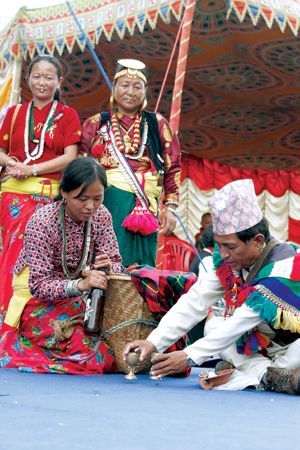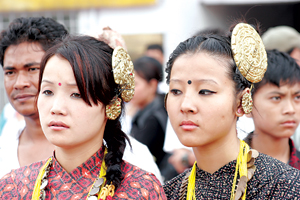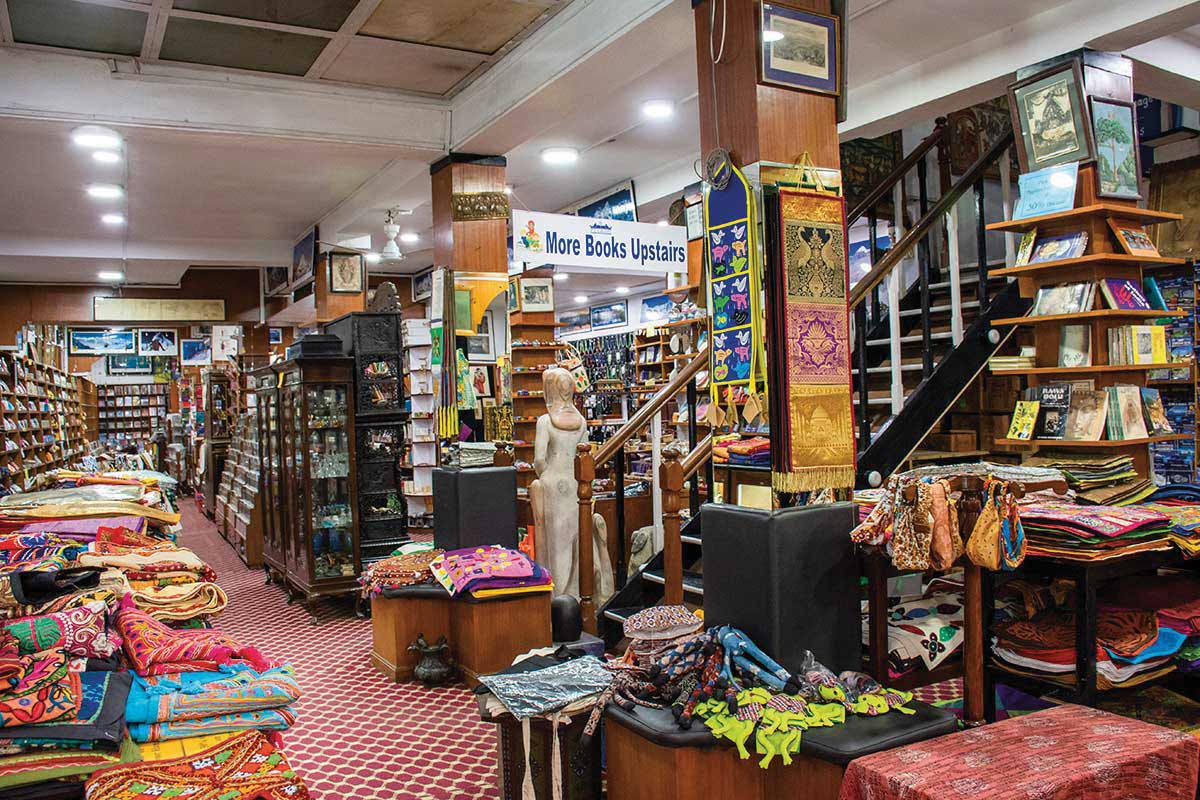W ho doesn’t know about the legendary Gurkhas? If you do, then you also know that the word is almost synonymous with the dashing Gurungs. After the Anglo-Nepal War in 1815, the British went head over heels in their eagerness to recruit Gurungs (besides some other warlike tribes) into their army. Their faith was mightily vindicated in later wars when the Gurkhas put the fear of God (and the khukuri) into thousands of enemy hearts. Many Gurkhas won the Victoria Cross, including Lachhiman Gurung and Bhanbhakta Gurung, both now on the annals of a proud Gurung history. But valor is not only what sets the Gurungs apart. They are also noted for their merry-making. So, you may well ask, what goes towards the making of such a formidable race? While the answers can be many, their way of life must also have a big role to play.

A typical Gurung wedding being enacted in the form
of a drama
But first, the basics: Their home is in Gandaki Zone and they can be categorized as the predominant highlanders (lekhalis) or lowlanders. The former’s cultural practices resemble that of Tibetans while lowlanders are more influenced by Hindu practices. They have two sub-tribes: the Char Jat (four clans) and the Sorha Jat (16 clans). The Char Jat includes the Ghales, the Ghotanes, the Lamas, and the Lamichanes. Tamu Kwei is the Gurung language and they refer to themselves as Tamu or Tamme. Originally followers of Bon shamanism, today the majority are Buddhists with the minority being Hindus and Christians. To ward off evil spirits, all Gurungs wear a yellow thread called rupa.
Life Rites
Birth is followed by various rituals, including navran (day nine, in which the mother is sprinkled with mahar kyu, a mixture of gold, ghee, honey, milk and cow’s urine). On the same day, a male child’s earlobes are pierced, and if it’s a female child, then her earlobes and nostrils are pierced. At five months (if female) and six months (if male), the child is fed his/her first grains in a ceremony called kain koba (pasni). In the case of first born sons, when he is two years old, the maternal uncle conducts a ceremony called pulpule (literally, spoiling the child).
At the age of five, seven, nine or 11, a boy’s locks are clipped by his maternal uncle in a ceremony called kra prehiba (chewar). In the case of a girl when she reaches 12 years of age, she is given a ‘gunyo’ (petticoat) and a ‘choli’ (blouse) signifying her coming of age. On reaching teenage, they become members of an association called rodhi where they socialize, perform communal tasks and find marriage partners. A Gurung must marry outside his clan but within his caste and they can have an arranged marriage or marry by elopement. As for death rites, they are lengthy. A three-day rite performed in two stages – burial or cremation of the body (roho-waba) and soul cremation (pae or arghun).

Young Gurung girls decked in traditional ornaments
Socio-Cultural Rituals
Tamu Lhochchar: Poush 15 (around December 30) is when Gurungs celebrate the New Year.
Toho Tehn: On three Sundays of Chaitra (March-April) and Shrawan (July-August), groups of boys walk through the village beating drums, cymbals and bells to chase away evil spirits.
Sildo thi-ba: The worship of natural deities is done five times in a year in Chaitra, Jestha, Bhadra, Asoj and Kartik, on a Tuesday nearest to the full moon day.
Songs and Dances
Dohori Geet: Both men and women take part in singing folk songs in the form of repartee.
Ghanto Naach: Held between Magh Panchami (January end) and Baisakh Purnima (April end), pre-pubertal girls called ghansaris dance trance-like to a long story sung by a group of men.
Sorathi Naach: This dance is held for 16 days and falls between Dashain and Tihar. It is a re-enactment of an ancient legend.
Maruni Naach: It is performed in Shrawan (July-August) and lasts up to Poush (December-January). Various Hindu deities are worshipped with particular emphasis on Saraswati.
Note: Although they are not considered to be Gurung or Buddhist festivals, the two major Hindu festivals of Dashain and Tihar are also celebrated by the Gurungs. The one difference is that they put on white tika on their forehead and not red like other Hindus.










